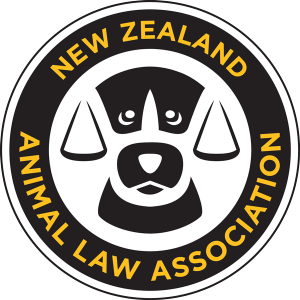New Zealand's Animal Welfare Legislation and Rodeos
A review of relevant legislation and literature reveals that the Animal Welfare Act 1999 ("the Act") and its Code of Welfare: Rodeo ("the Code"), form the basis for the prevention of ill-treatment of animals in rodeos.
The Act is broad in its description of animal welfare, providing for strict liability offences for the ill-treatment of animals and setting out minimum standards of care.
It encourages all those responsible for the care of rodeo animals to adopt the highest standards of husbandry, care and handling, and to equal or exceed the minimum standard (page 3 of the Code).
The Code acknowledges that “rodeos involve situations where animals are subjected to a risk of injury or distress and proper consideration needs to be given to the health and welfare of the animals used in the events” (page 10).
As a minimum standard “animals must be handled at all times in such a way as to minimise the risk of pain, injury or distress” (page 10). Similarly, “events and procedures need to be specifically designed to prevent the suffering and minimise the impacts on the welfare of animals used” (page 14).
However, there is no statutory obligation to comply with codes of welfare. Consequently codes of welfare are not enforceable in their own right (Joanna Tuckwell “Animal Welfare Act: codes of welfare” (2009) 7 NZLJ 267 at 269). Rather they set a minimum standard, which at best can be used as rebuttable evidence in a prosecution for an offence under sections 13(1A), 24(1) and 30(1A) of the Act.
For example, the minimum standard for “rope and tie” (calf roping) sets out that “calves must be handled using the minimum force and in a way that minimises pain and distress at all times during the event” (page 15 of the Code).
And yet in 2016, the New Zealand Vet Association (NZVA) raised concern about some rodeo practices (specifically calf roping, steer wrestling and team roping) stating that all of these events may result in musculoskeletal injuries and pain – a view shared by the SPCA (“New NZVA rodeo policy gets SPCA thumps up”, press release, 15 June 2015).
The NZVA believes that some rodeo events “may fail to meet the high standards of animal welfare that we expect as a society, and are prescribed under the Animal Welfare Act (1999)” (NZVA “Rodeo” (position statement, 01 June 2016)).
Such practices could give rise to a prima facie offence under the Act. Part 2 of the Act deals with conduct towards animals, it addresses the wilful and reckless ill-treatment of animals in sections 28 and 28A respectively.
The Act defines the ill-treatment of animals as a strict liability offence in section 20 and as such could give rise to prosecution under the Act in relation to rodeo events that do not meet animal welfare standards.
During the 2014/2015 rodeo season, seven rodeos may have been operated in ways that were in breach of the Code, and two bulls died (SAFE “Shocking new rodeo footage shows animals continue to suffer” (media release, 23 January 2017; https://safe.org.nz/rodeo-cruelty).
In the 2015/2016 rodeo season a bull and a horse were killed in unrelated rodeo events (SPCA “62,000-strong Ban Rodeo Petition to be handed to Parliament” (press release, 17 March 2016).
To date, there have been no prosecutions under the Act in regard to rodeos, suggesting that the Act and Code and/or their enforcement are at present insufficient to address the suffering that animals experience through this form of entertainment.
The New Zealand Animal Welfare Strategy (NZAWS), made the statement that “animals are sentient – they can feel pain and distress – and as a humane society we have responsibilities to ensure our animals’ needs are met” (Ministry of Primary Industries New Zealand Animal Welfare Strategy (May 2013) at 3).
Unfortunately the NZAWS has no legal effect and only provides a framework for how animals should be treated in New Zealand. Sentience of animals is acknowledged in the long title of the Act.
Why then, are rodeos still legal in New Zealand, when for example in the UK, they have been effectively banned by statute since 1934? (Protection of Animals Act 1934 (UK) 24 & 25 Geo c 21, s1).
Written by Andre Hinz.

